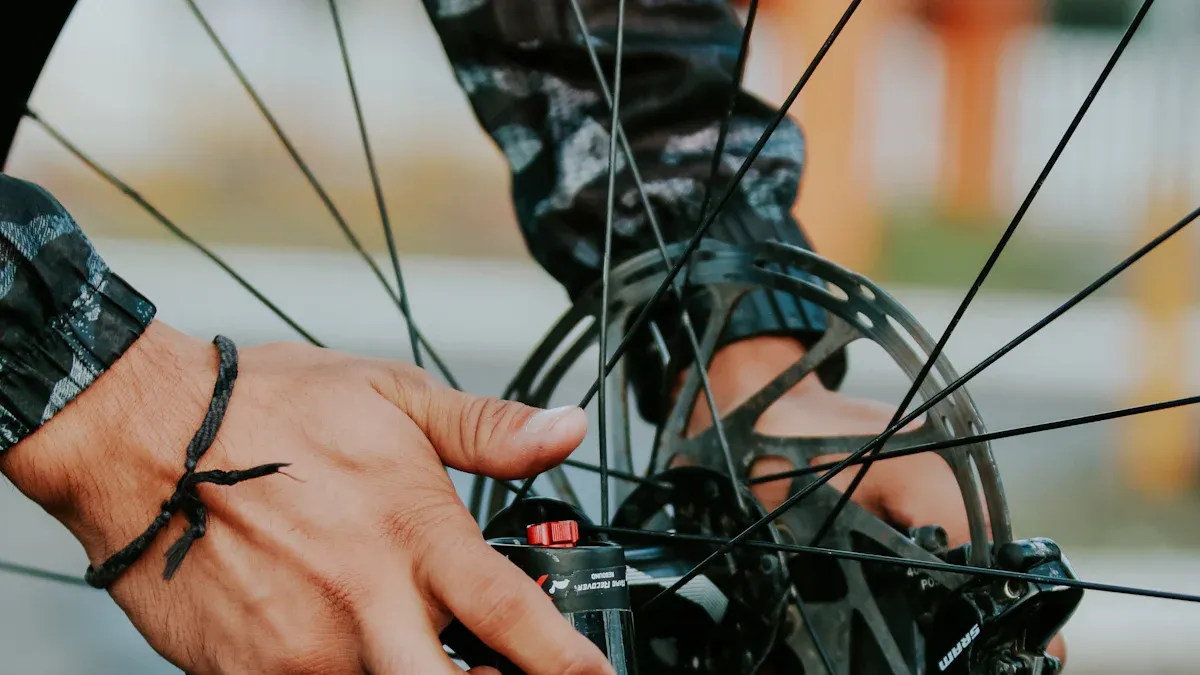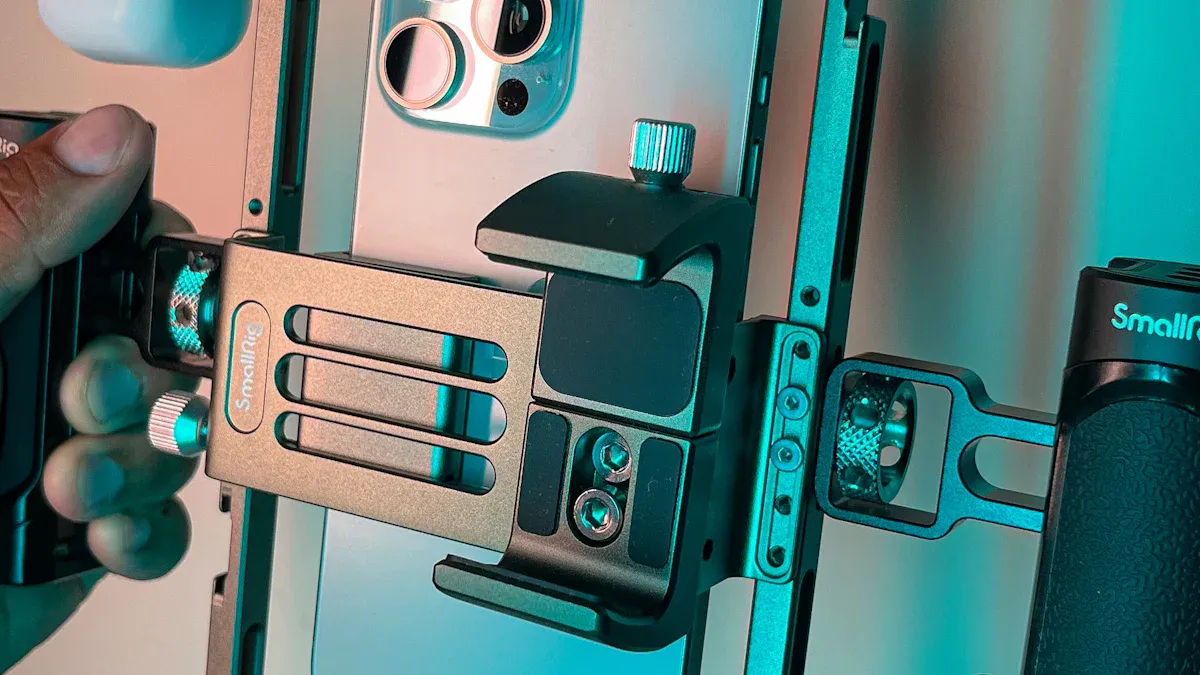How often should you replace batteries in flashlights and headlamps?

When was the last time you checked the batteries in your flashlight using or headlamp? These essential tools rely on fresh batteries to work when you need them most. If you use your flashlight using occasionally, you should replace batteries every 6-12 months. For frequent use, aim for every 3-6 months. Rechargeable models need a full charge every few months to stay in top shape. Environmental factors like temperature and humidity can also affect battery life, so keep that in mind. Regular maintenance ensures your flashlight using or headlamp is always ready to go.
Key Takeaways
Change flashlight batteries every 6-12 months if used rarely. For frequent use, replace them every 3-6 months to keep them working well.
Keep batteries in a cool and dry spot. This stops damage from heat or moisture, which can shorten battery life.
Check your flashlight often for weak light, flickering, or rust. These signs mean it’s time to change the batteries.
Factors Affecting Battery Replacement Frequency
Flashlight Using and Usage Patterns
How often you use your flashlight using plays a big role in how often you’ll need to replace its batteries. If you only use it occasionally, like during power outages or camping trips, the batteries can last longer. However, frequent use, such as for work or outdoor activities, drains the batteries faster. Regularly checking the runtime of your flashlight using can help you gauge when it’s time for a replacement. If you notice the light dimming sooner than expected, it might be time to swap out the batteries. Keeping track of your usage patterns ensures you’re never caught off guard in the dark.
Battery Type: Alkaline, Lithium, and Rechargeable
The type of battery you choose directly impacts its lifespan and performance. Here’s a quick breakdown:
Lithium-ion batteries are rechargeable and can last over 1,000 charge cycles, making them ideal for long-term use.
Alkaline batteries are single-use and need replacing after draining, which makes them less durable than lithium-ion batteries.
Lithium batteries have a high energy density and can last over 10 years in shelf life, while alkaline batteries are better suited for low-drain devices.
Although lithium batteries cost more upfront, they’re more cost-effective over time compared to alkaline batteries.
Choosing high-quality batteries can reduce the need for frequent battery replacements and improve your flashlight’s runtime.
Environmental Conditions: Temperature and Humidity
Environmental factors like temperature and humidity can significantly affect battery performance. High temperatures speed up battery discharge and increase the risk of failure. On the other hand, low temperatures reduce battery capacity and slow charging rates. Humidity also plays a role. High humidity can cause condensation and corrosion, damaging the battery and the flashlight using itself. Low humidity, meanwhile, can create static electricity that harms sensitive electronics. To maximize your battery’s lifespan, store your flashlight in a cool, dry place and avoid exposing it to extreme conditions.
Signs It's Time to Replace Batteries

Dimming or Weak Light Output
Have you noticed your flashlight or headlamp isn’t as bright as it used to be? Dimming or weak light output is one of the most obvious signs that it’s time to replace your flashlight batteries. When the power fades faster than before—like a flashlight dimming within an hour when it used to last all night—it’s a clear indicator the batteries are nearing the end of their life. This happens because the battery’s capacity decreases over time, leading to reduced performance. To maintain reliable performance, always keep spare batteries on hand and replace them as soon as you notice the light weakening.
Flickering or Intermittent Performance
Does your flashlight flicker or turn off unexpectedly? Flickering or intermittent performance is another sign that your batteries might need replacing. This issue often occurs when the battery struggles to provide consistent power. In some cases, it could also point to signs of corrosion on the battery terminals, which disrupts the connection. Regular cleaning of the terminals can help prevent corrosion and ensure your flashlight works smoothly. If the problem persists, it’s time to replace your flashlight batteries to restore reliable performance.
Physical Damage, Leakage, or Corrosion
Take a close look at your batteries. Do you see any cracks, leakage, or signs of corrosion? Physical damage like this compromises the battery’s condition and can lead to complete failure to turn on your flashlight. Leakage, in particular, can damage the internal components of your device, making it unusable. To prevent this, follow essential care tips like storing your flashlight in a cool, dry place and removing the batteries during long periods of inactivity. Regular inspections and replacing damaged batteries promptly will keep your flashlight in top shape.
Tip: Always dispose of damaged or leaking batteries properly to avoid environmental harm.
Maintenance Tips to Extend Battery Life

Proper Storage to Prevent Battery Drainage
Storing your batteries correctly can make a big difference in their lifespan. Always store your battery in a cool, shaded, or temperature-controlled area. Heat can cause battery drainage, while extreme cold can reduce capacity. For rechargeable batteries, charge them to about 80% before storing to reduce stress on the cells. If you’re planning long-term storage, aim for around 50% charge to prevent excessive self-discharge. Avoid letting batteries fully discharge, as this can harm their ability to hold a charge. Following these battery best practices will help you get the most out of your flashlight or headlamp.
Fully Charge Your Light’s Battery for Rechargeable Models
Rechargeable flashlight maintenance is simple but essential. Always fully charge your light’s battery before using it. This ensures you have maximum runtime when you need it most. Rechargeable batteries should also be recharged before they drop below 25% capacity. Letting them drain too low can shorten their lifespan. Regularly charging your light’s battery keeps it ready for action and helps maintain rechargeable batteries for years of reliable use.
Regular Inspections for Corrosion or Damage
Take a moment to inspect your flashlight or headlamp regularly. Look for signs of corrosion, leakage, or physical damage on the batteries. Corrosion can disrupt the connection between the battery and the device, leading to poor performance. If you spot any issues, replace the batteries immediately to avoid further damage. Keeping your flashlight clean and free of debris also helps maintain rechargeable batteries and ensures smooth operation.
Remove Batteries During Long Periods of Inactivity
If you’re not planning to use your flashlight or headlamp for a while, remove the batteries. This prevents battery drainage and reduces the risk of leakage or corrosion. Rechargeable batteries can lose charge over time, so check and recharge them every few months to keep them in good condition. By taking this simple step, you’ll protect your device and extend the life of your light’s battery.
Regularly replacing batteries keeps your flashlight or headlamp ready when you need it most. To reduce replacements, follow these tips:
Store them in a cool, dry place away from heat.
Remove batteries from unused devices to avoid leakage.
With proper care, you’ll enjoy reliable performance every time.
FAQ
How do I know if my headlamp batteries are low?
Your headlamp will dim or flicker when the batteries are low. If the light output weakens quickly, it’s time to replace or recharge the batteries.
Can I use rechargeable batteries in any headlamp?
Not all headlamps support rechargeable batteries. Check your headlamp’s manual to confirm compatibility. Using the wrong type can damage the device or reduce performance.
What’s the best way to store a headlamp for long periods?
Remove the batteries before storing your headlamp. Keep it in a cool, dry place to prevent battery leakage or corrosion. Rechargeable batteries should be partially charged.
See Also
Key Strategies for Keeping Your Flashlight in Top Shape
Maximize Your Flashlight's Battery Life with These Tips
Prolong Your Flashlight's Lifespan for Extended Usage
Comprehensive Manual for Maintaining and Cleaning Flashlights
